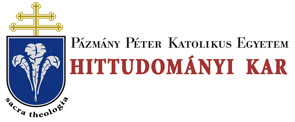Folia Canonica 7. (2004)
STUDIES - Szabolcs Anzelm Szuromi: Patristic Texts in the Collectio Canonum Anselmi Lucensis (Recension 'a') and their Correspondence with the Decretum Gratiani
PATRISTIC TEXTS IN THE COLLECTIO CANONUM ANSELMI LUCENSIS 75 the day to day ecclesiastical usage. This could be a reason why these topics were received by the later canonical collections, i. e. Decretum Gratiani.2I But we have to mention here, that the part of penance in edF of the Decretum Gratiani (C. 30) differs textually some times from Book 11 of Anselm ’s Collection when that cites the same work from St. Augustine. Nevertheless, St. Augustine was the author whose theological interpretation could motivate the theological character of the ecclesiastical discipline for the compilers of the canonical collections in the 11th 12* Century. Perhaps this is a reason why the compilers, especially during the university teaching, would like to use his thoughts directly from the original context, if they were able to find that. The importance of the originality took a momentous place again in the canonical thinking from the end of the 11th Century. 2. Canons by other authors Ambrose’s texts are found in the theme about the pope’s authority, the sacraments, marriage, penance and excommunication.22 St. Ambrose belongs to the three most important patristic authors together with St. Augustine and St. Jerome whose writings were special liked for supplying the basic material of Anselm ’s Collection. These supplements appear in the context of the particular books next to the other patristic canons, but we can find those also at the end of the books. Through the grown patristic material the contents of the later recensions have more theological stress. The canons by St. Jerome23 are a second numerous comprehensive group of canons if we take no notice of the letters of Pope Gregory the Great and Pope Leo the Great. St. Jerome’s writings take a basic place in accurately describing the degrees of the different Holy Orders and their duties and rights. This makes sense mostly regarding the bishops.24 Moreover, Jerome’s thoughts give a very clear overview on the rules of the worthy priestly life. These canons are the best examples for the success of the intention of the Gregorian theological concept. Regarding the canons from St. Cyprian we have already noted earlier, that they have a central place in the ecclesiological attitude of Anselm’s Collection.25 Cyprian’s canons can be found in Book 6 connected with the theme of the bishop’s authority and also in Book 8, which deals with the problem of “lapsi”. 21 Cf. Appendix I. 22 About his works i. e. : Berardino - Quasten (ed.), La edad, 166-211 ; E. Contreras - R. PENA Introduccion al estudio de los Padres Latinos de Nicea a Calcedonia siglos IVy V, Azul 1994, 210-228, especially 224-228. 23 Cf. Berardino - Quasten (ed.), La edad, 249-289; J.N.D. Kelly, Jerome. His Life, Writings, and Controversies, Peabody (Mass) 1998, 210—226. 24 Cf. J. LÉCUYER, Le problème des consécrations épiscopales dans l’Eglise d’Alexandrie, in Bulletin de littérature ecclésiastique 65 (1964) 242-257. 25 Szuromi, Die patristische Wurzel (nt. 2), 262-263.
